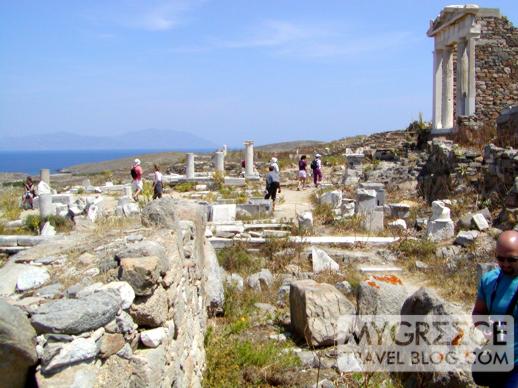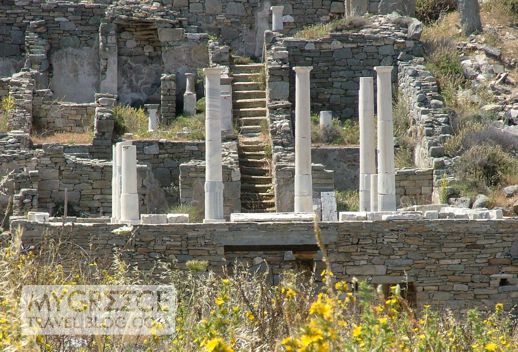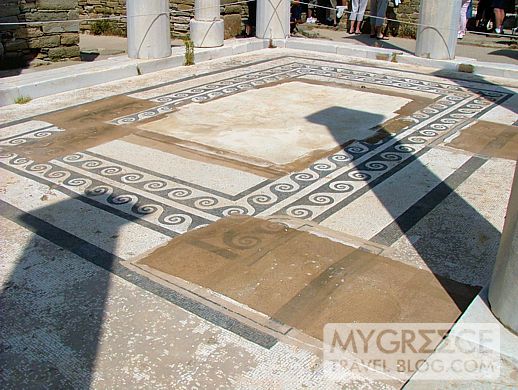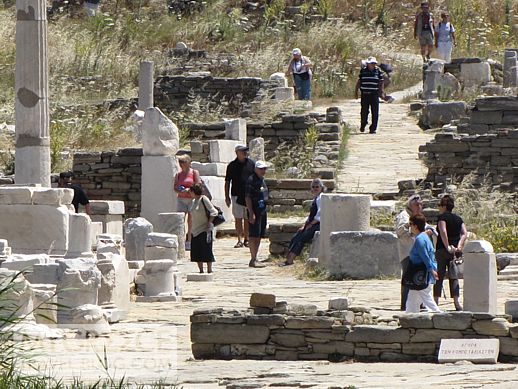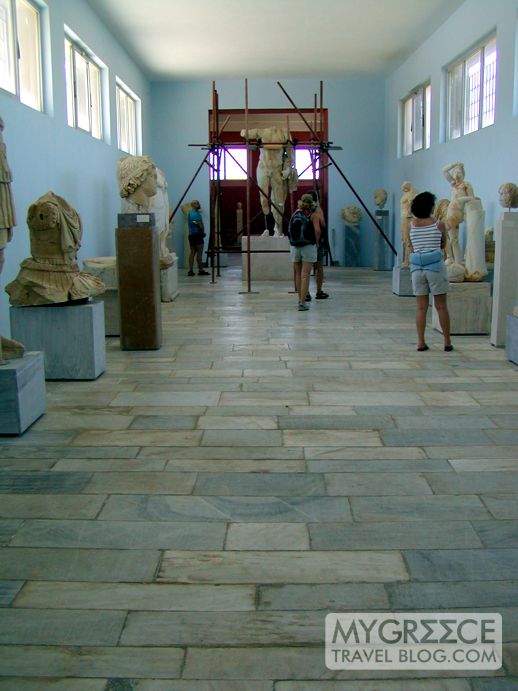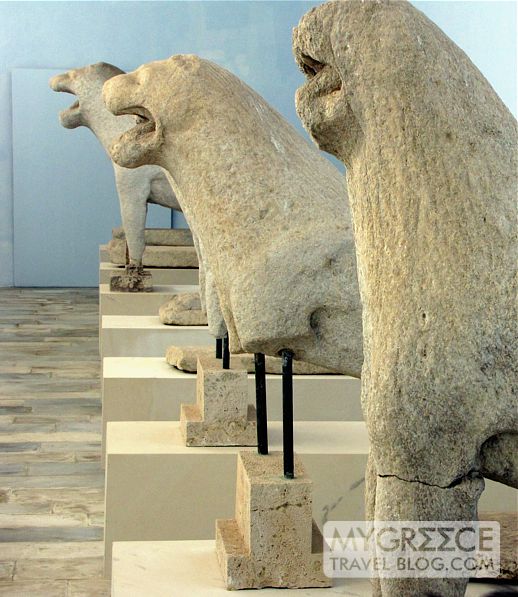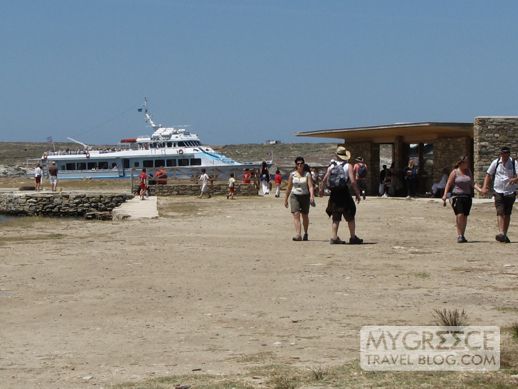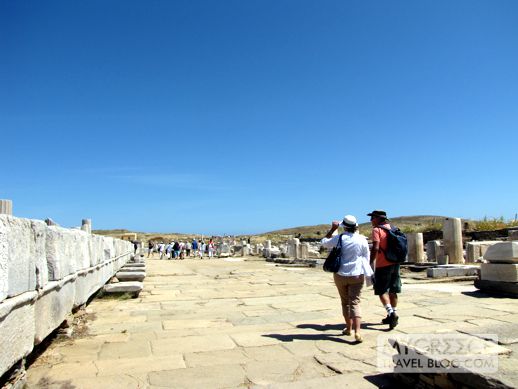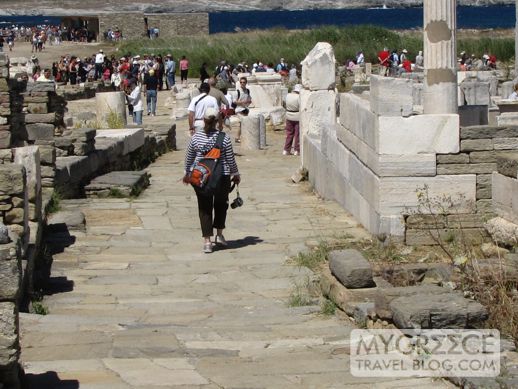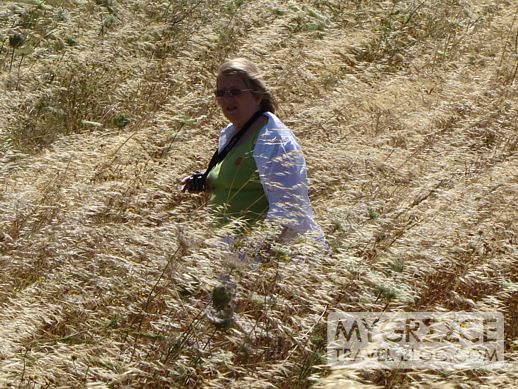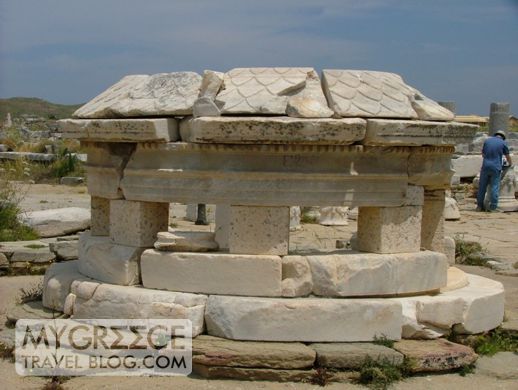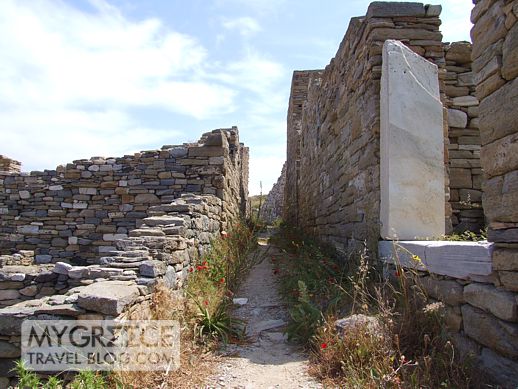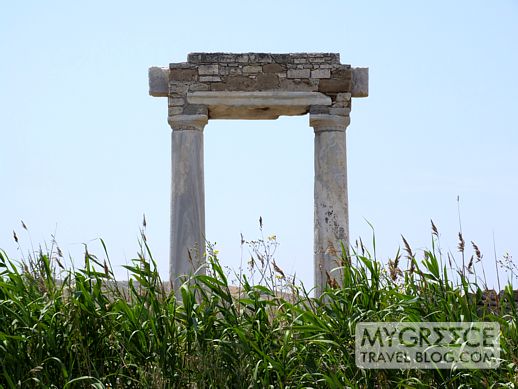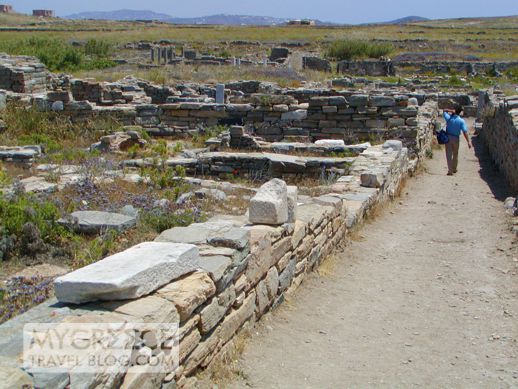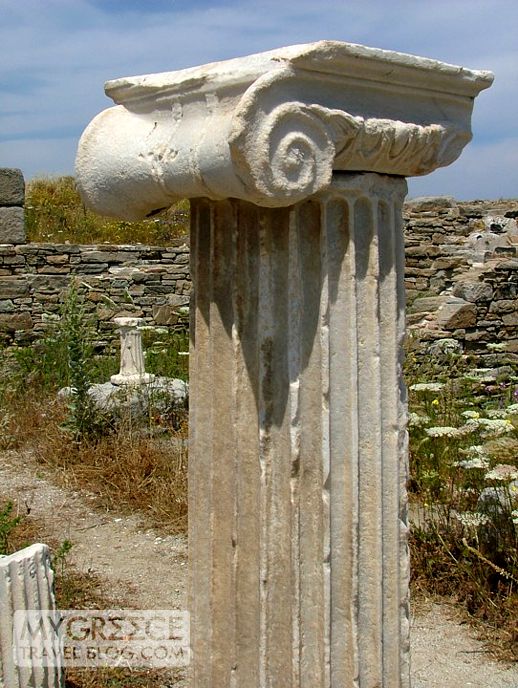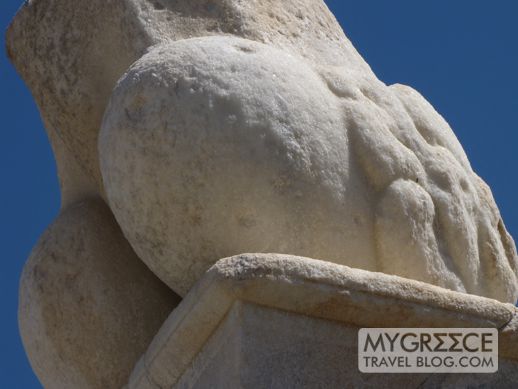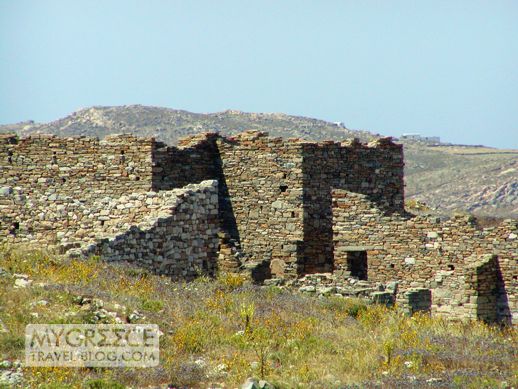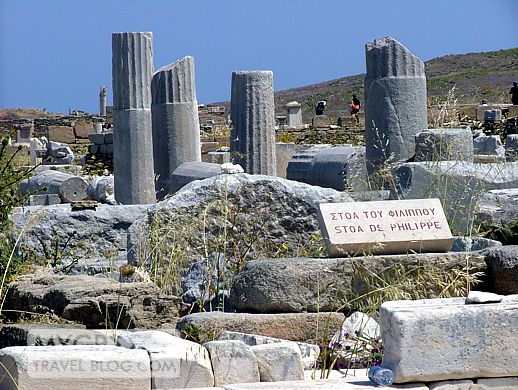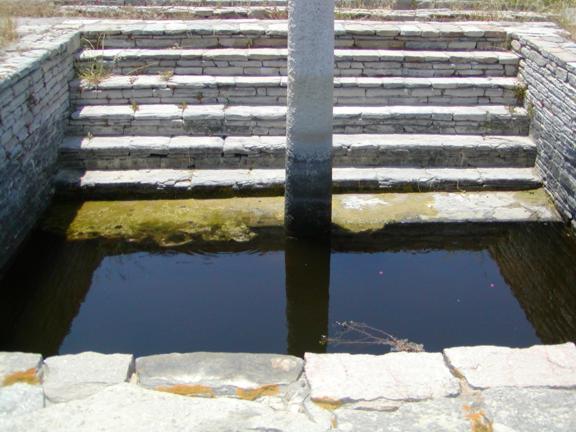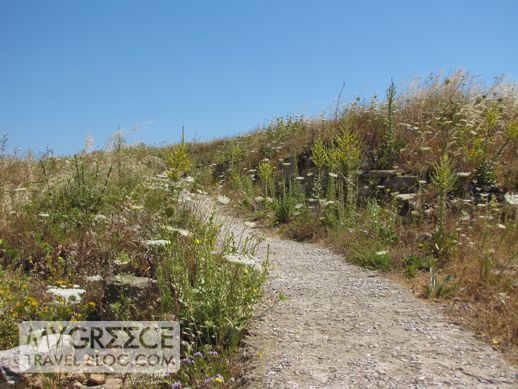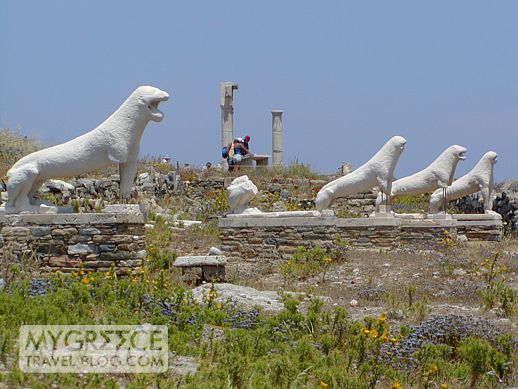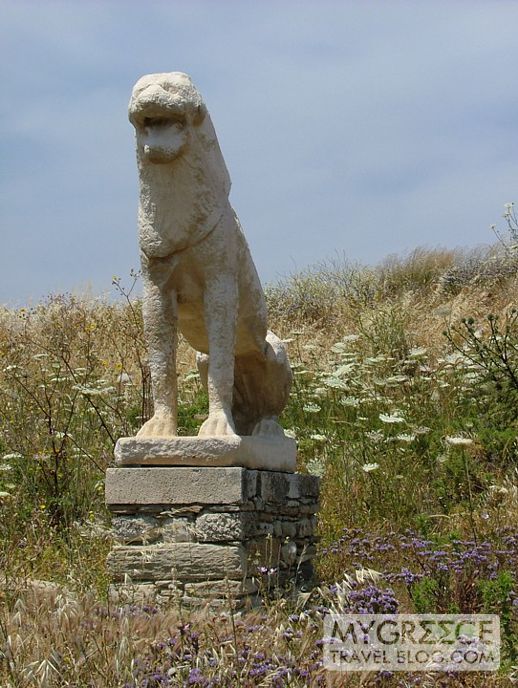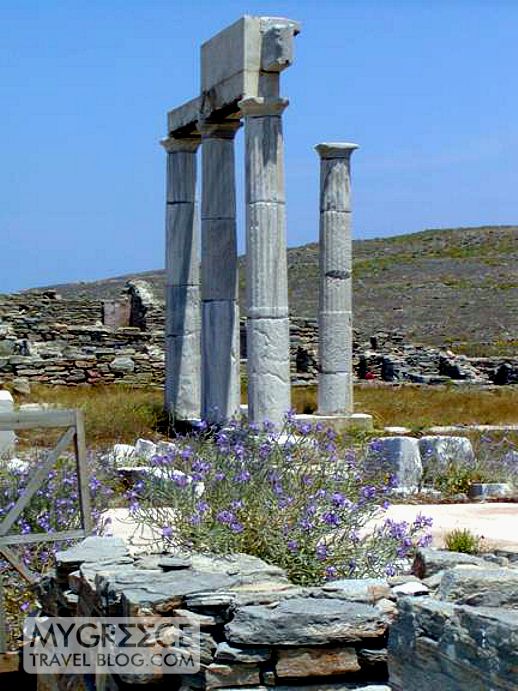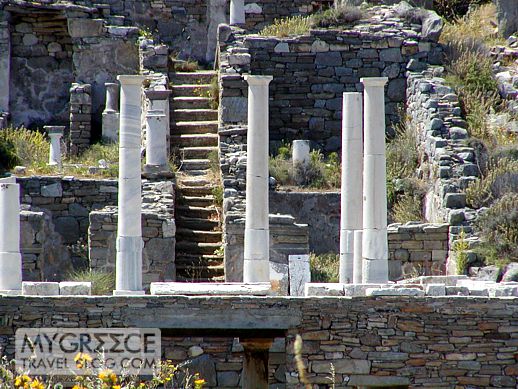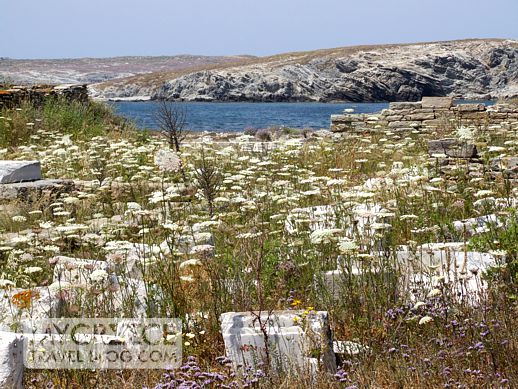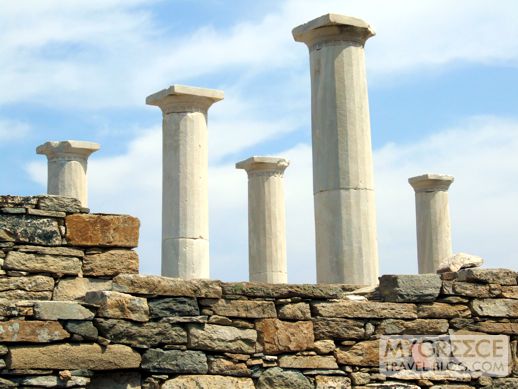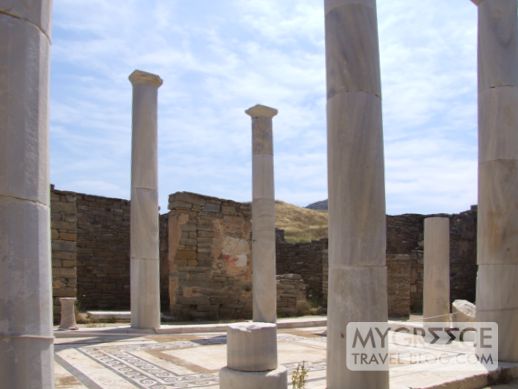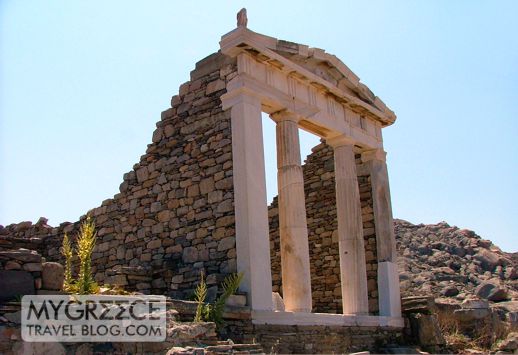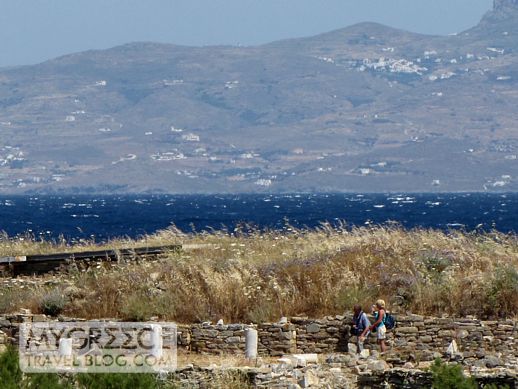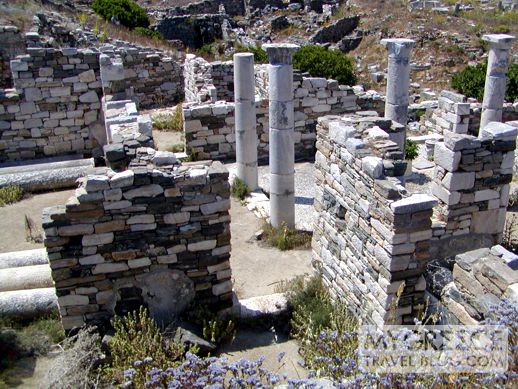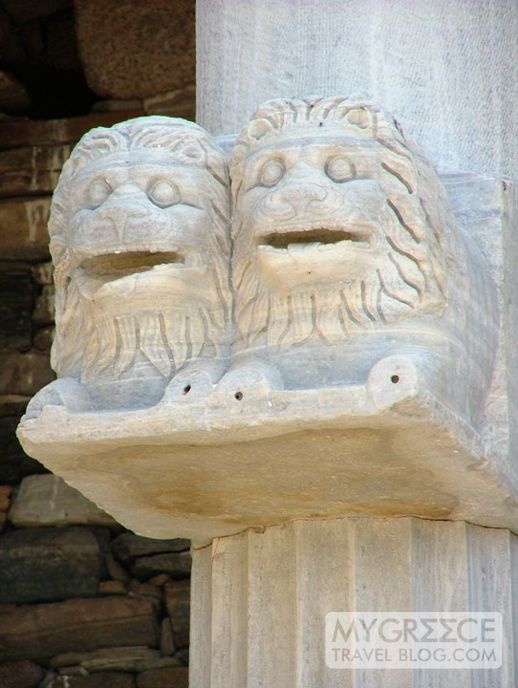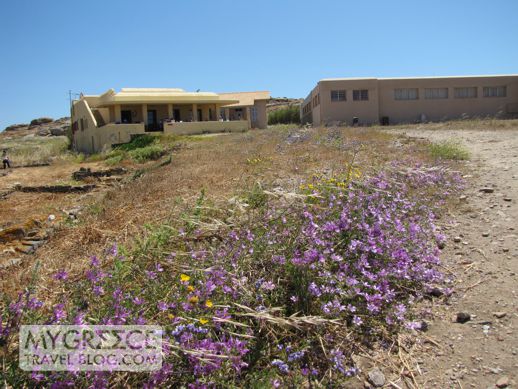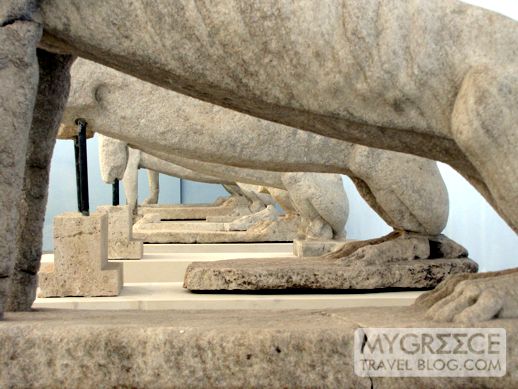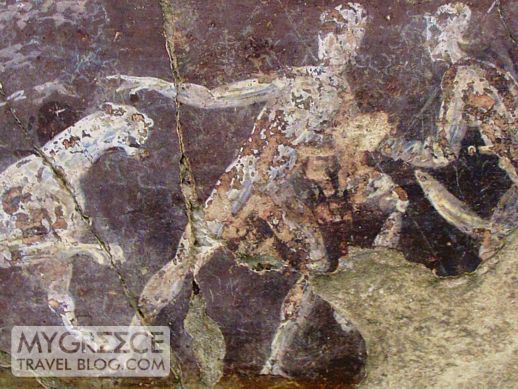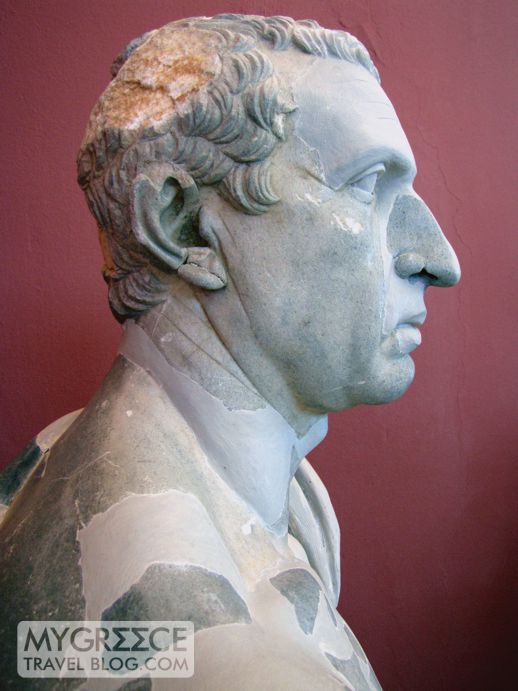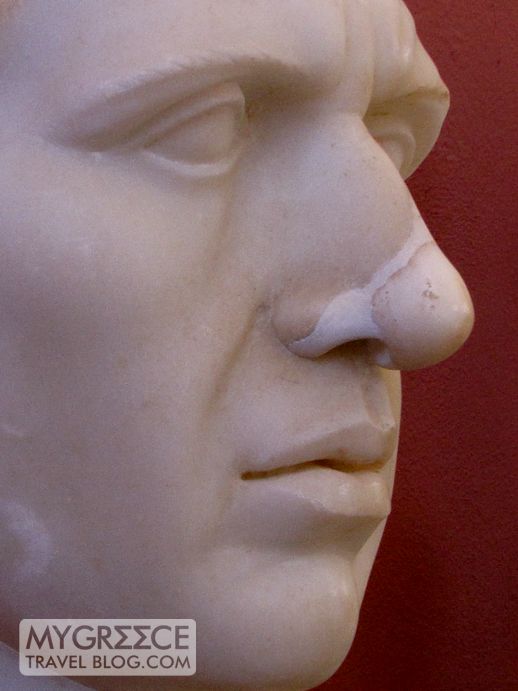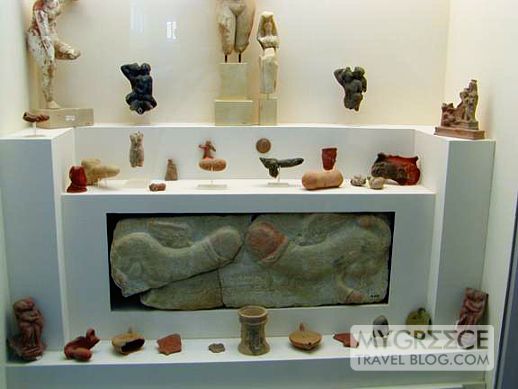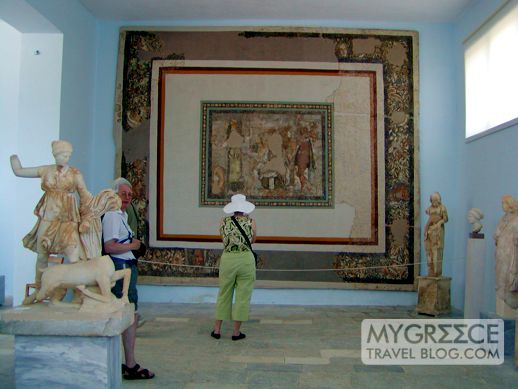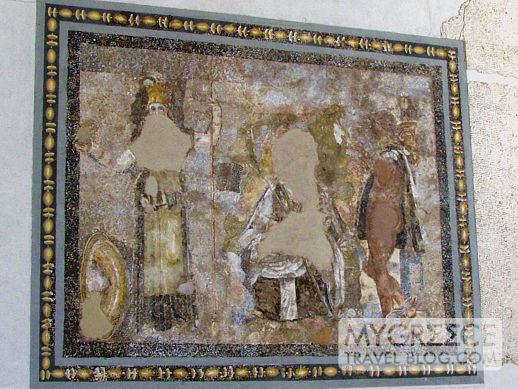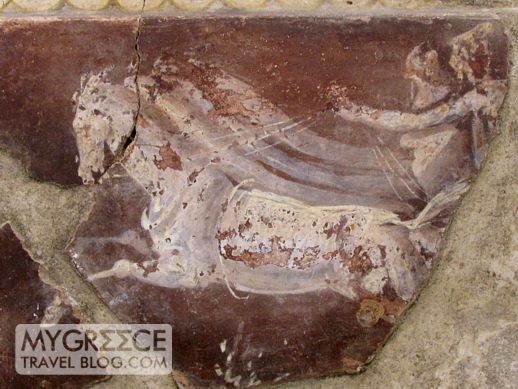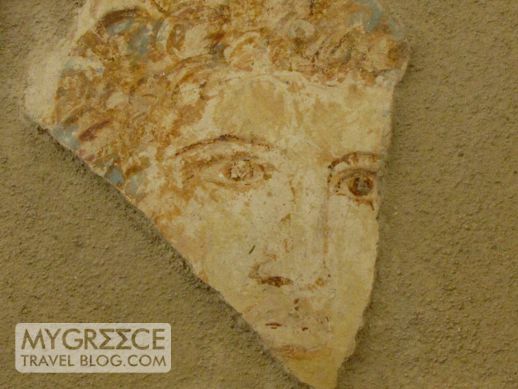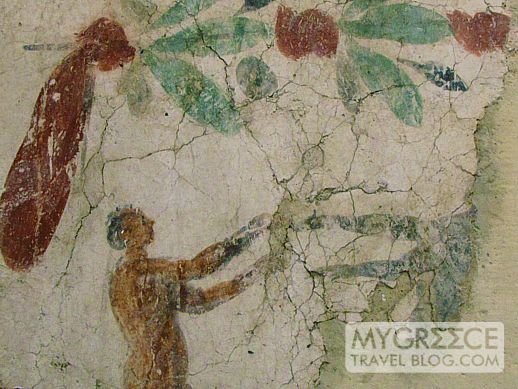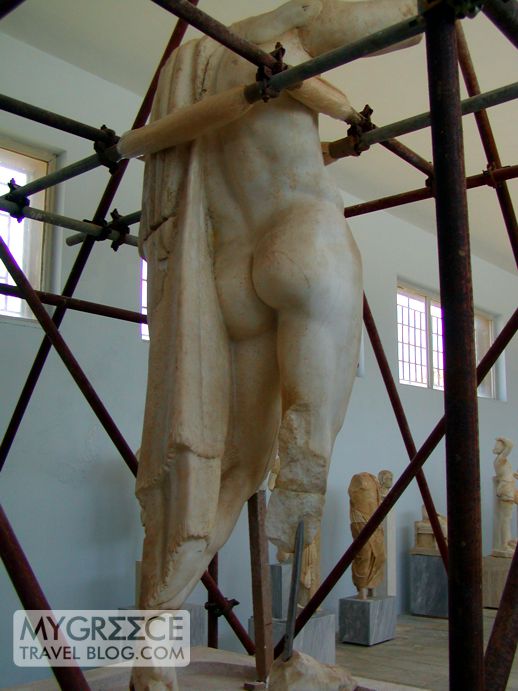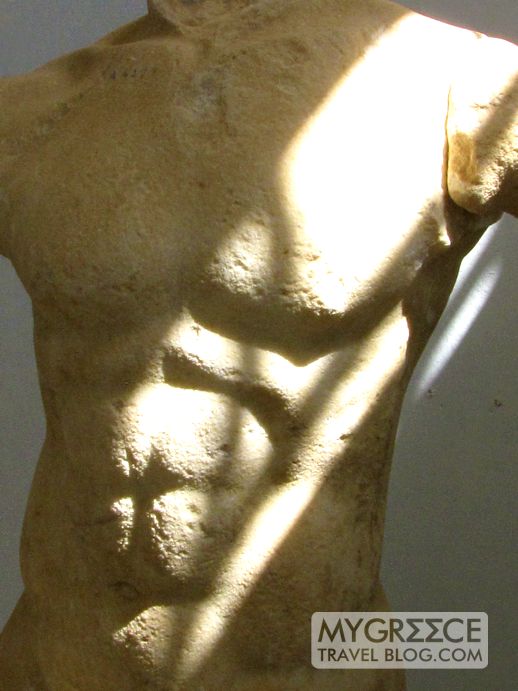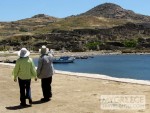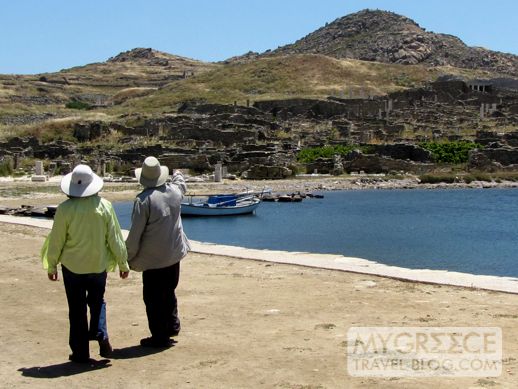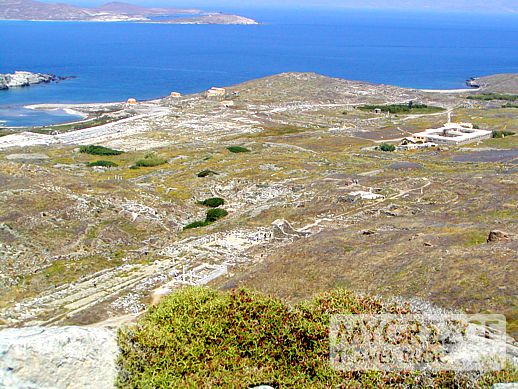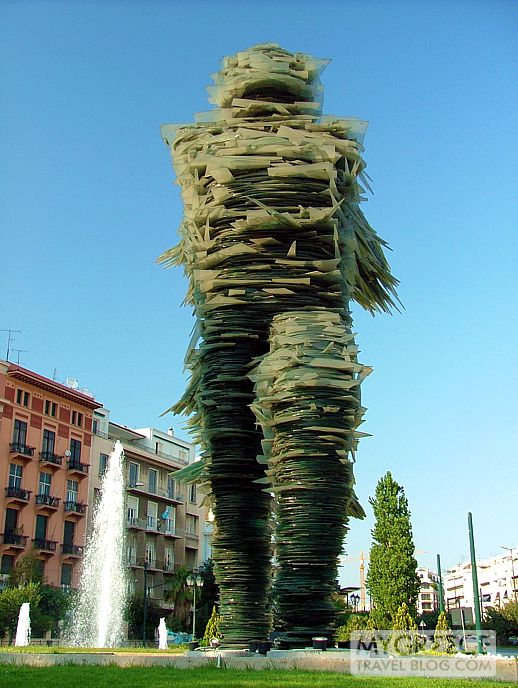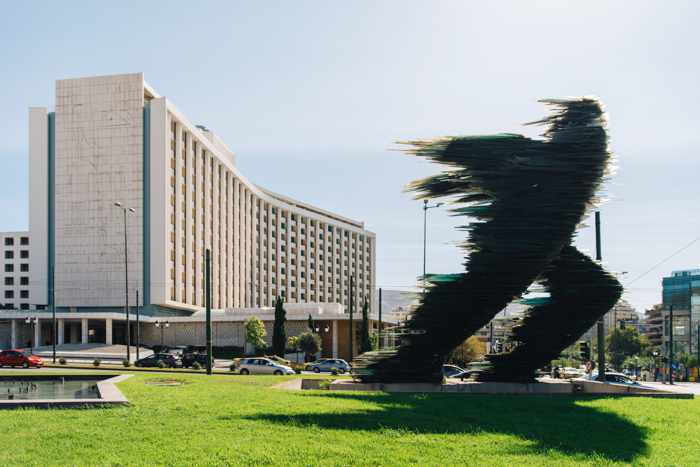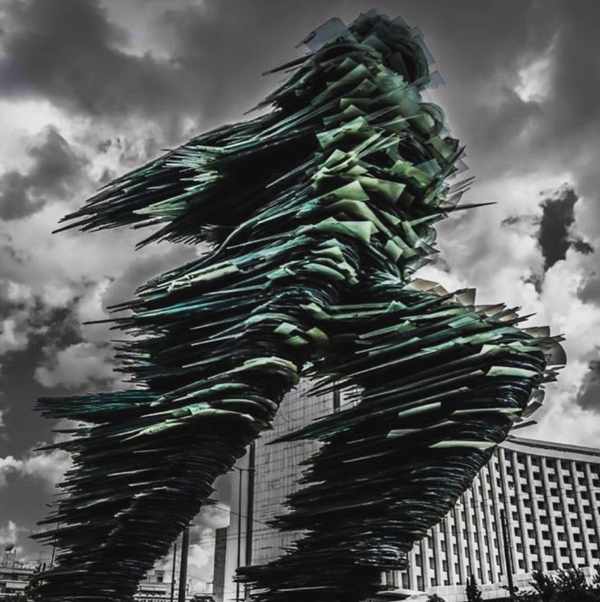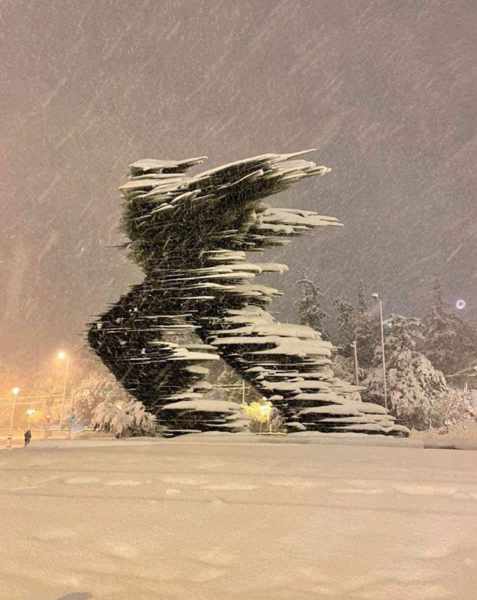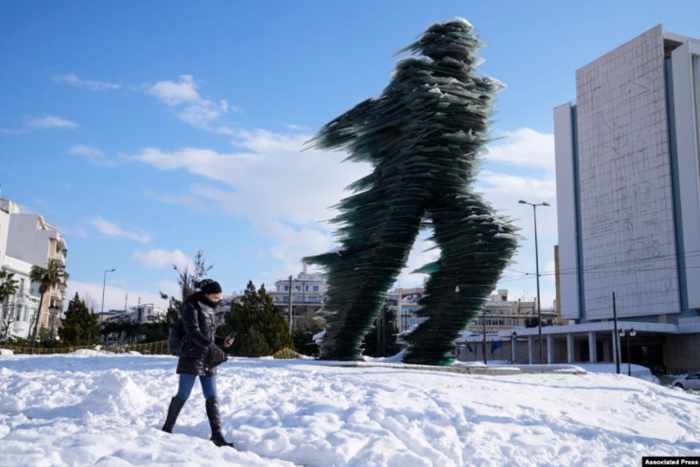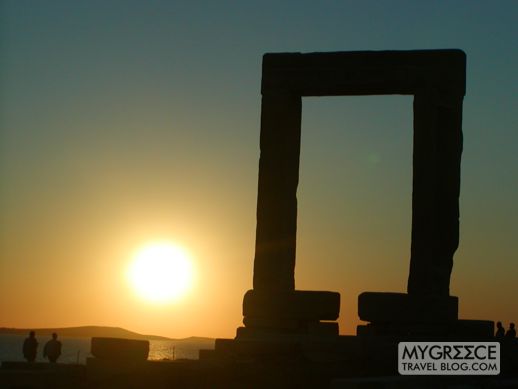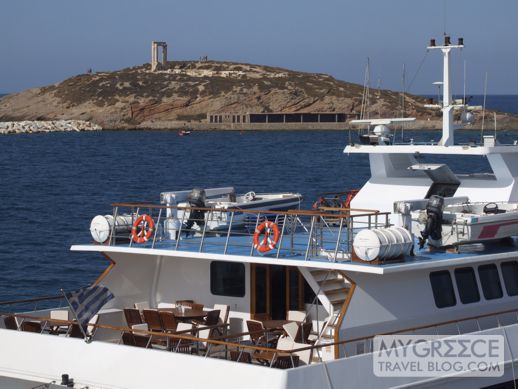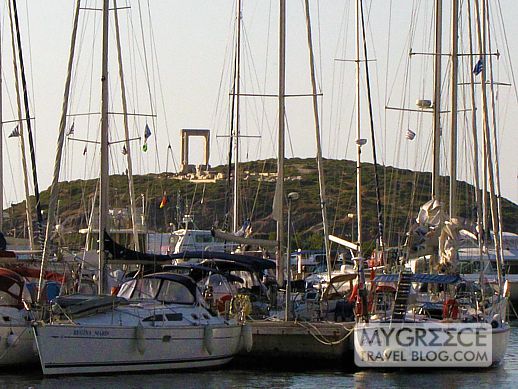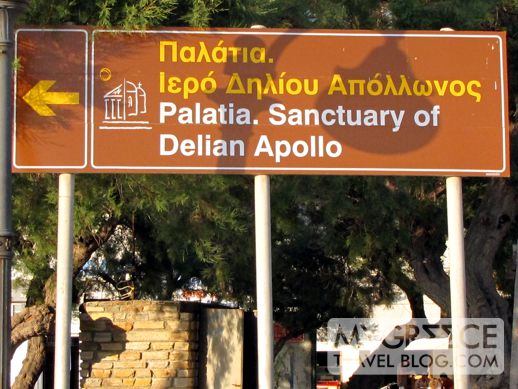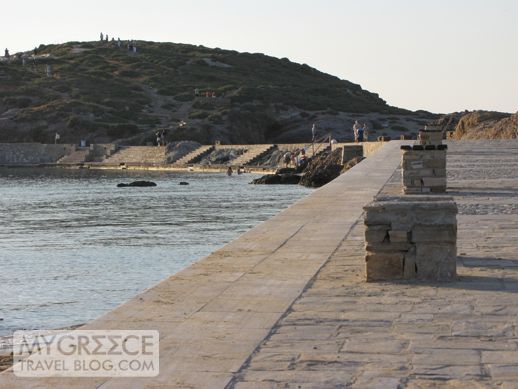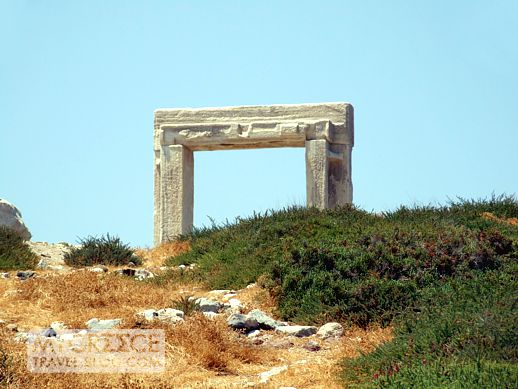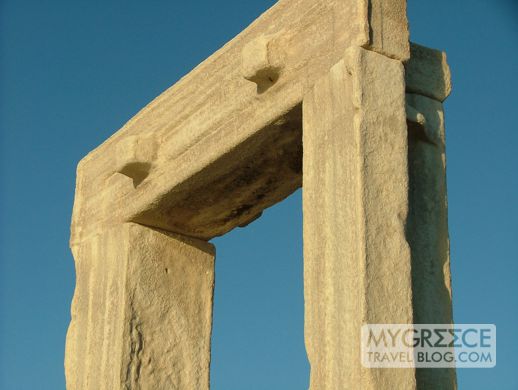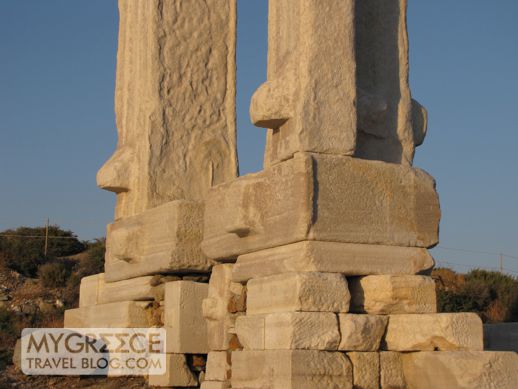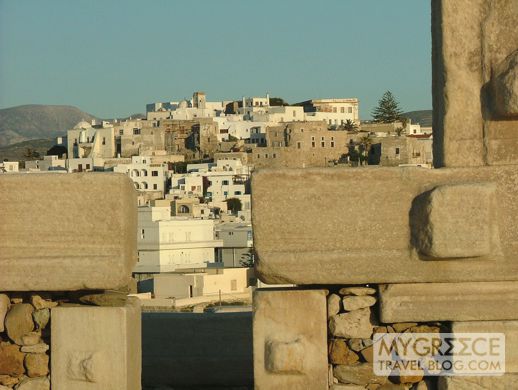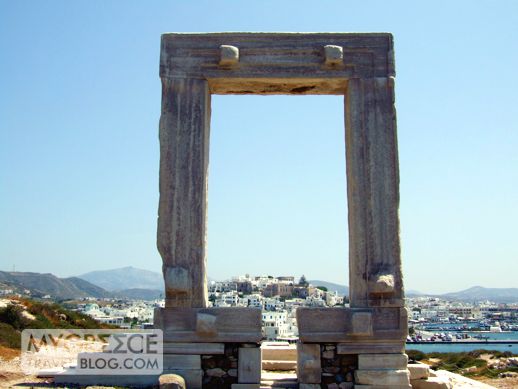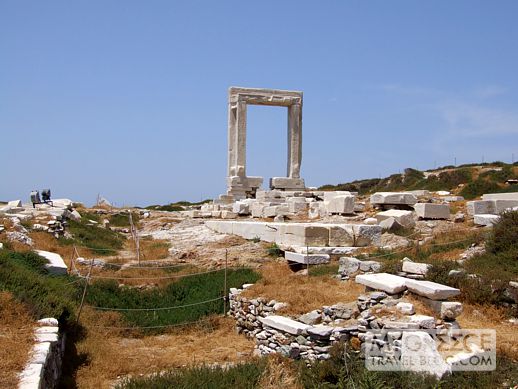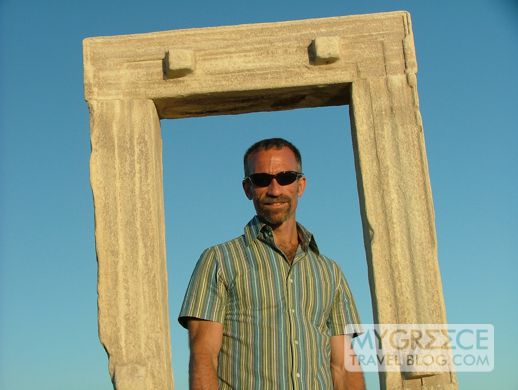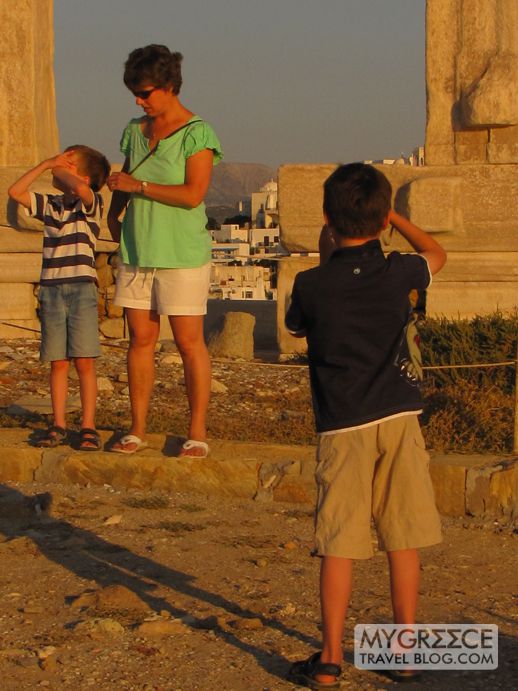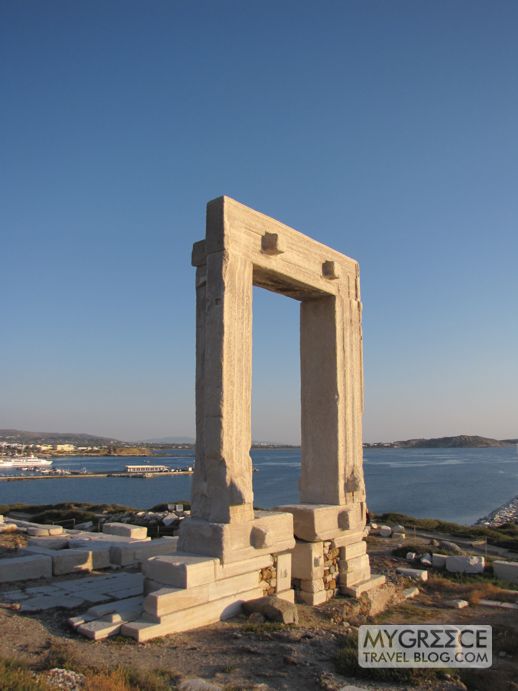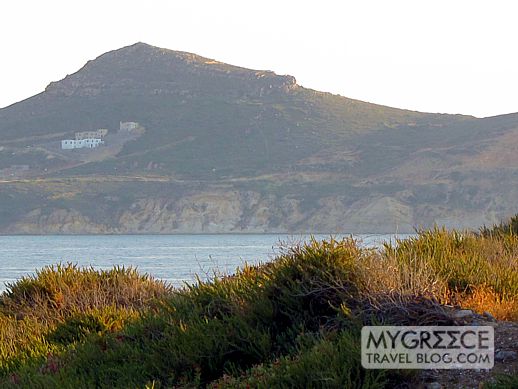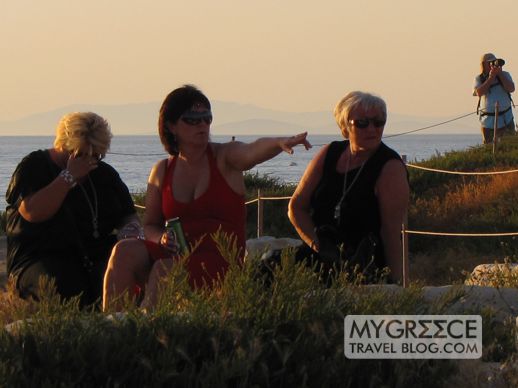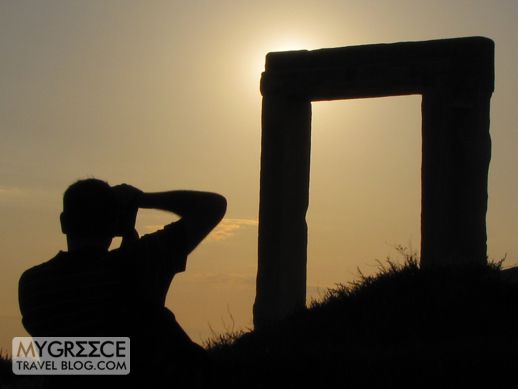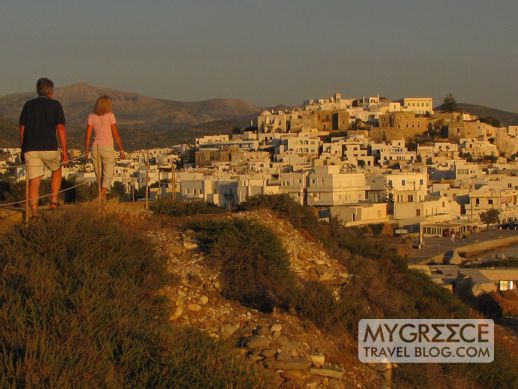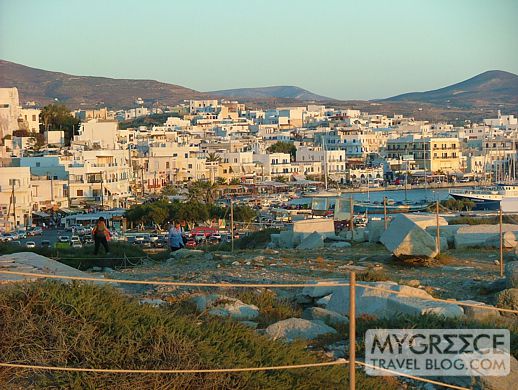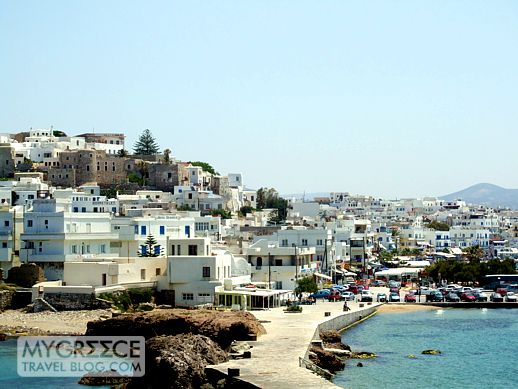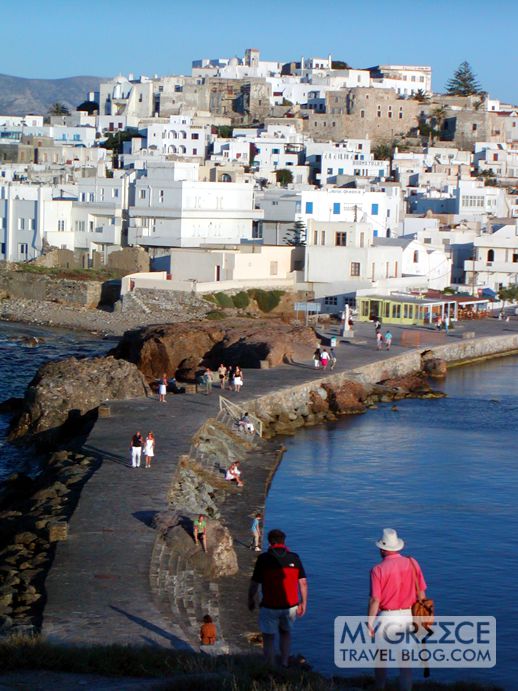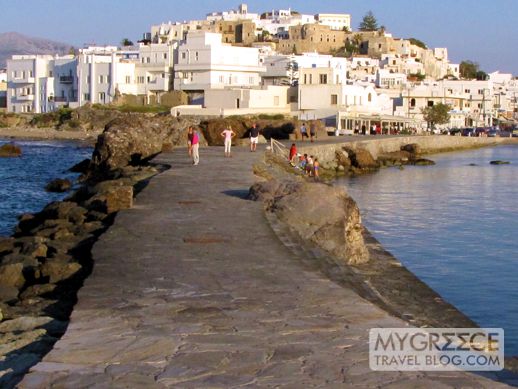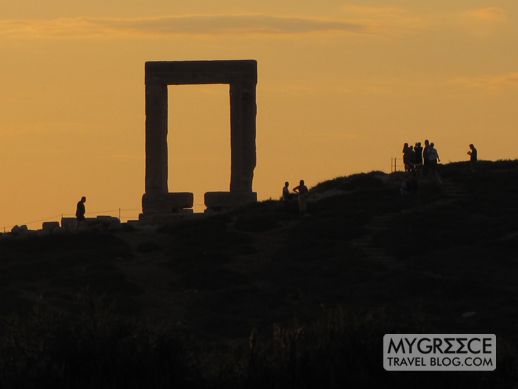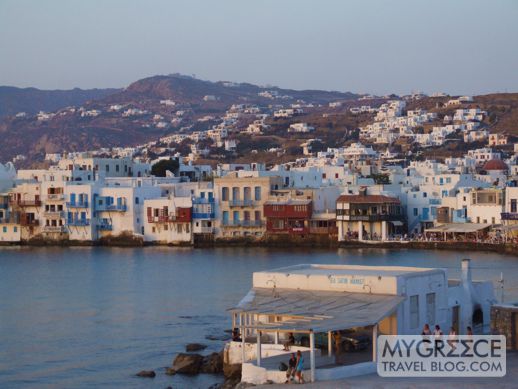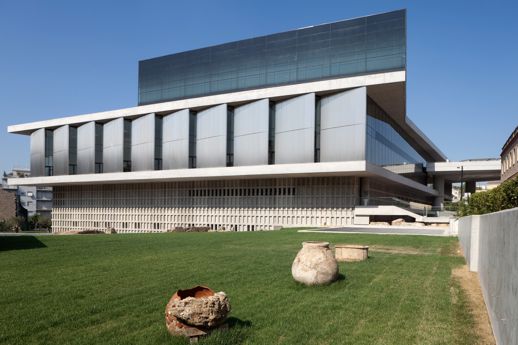The House of the Masks …
The Temple of Isis …
The House of Hermes …
… intricate mosaics, like this one in the House of Dionysus …
… and ruins and antiquities practically everywhere you step, like these in the Agora of the Competialists, will enthrall you for hours on Delos
And when you need a break from the intense summer sun, you can cool off while viewing hundreds of sculptures, mosaics, frescoes and antiquities …
… including the original marble Delian lions, now displayed in their own special gallery inside the Delos Archaeological Museum
Ruins and treasures aplenty: If you’re a big history and archaeology buff, a half-day excursion to Delos probably won’t offer nearly enough time to explore the vast outdoor ruins, let alone the treasures inside the Delos Archaeological Museum. There’s plenty to see, and after three separate visits we still haven’t seen it all.
But visiting Delos involves a lot of walking, usually under a hot, bright sun, and that makes it even more challenging to view as many of the island’s highlight attractions as possible in just one trip.
Hordes of tourists at the four houses with mosaics
Competing for viewing space with hordes of people in huge guided tour groups certainly doesn’t help, either. When we took a guided tour in 2006, we practically got trampled trying to see some of the spectacular mosaic floors at the four famous houses — the House of Dionysus, the House of the Tritons, the House of the Dolphins and the House of the Masks. About half a dozen different tour groups, with up to 50 people in each, converged on the houses at nearly the same time. There was some pushing and shoving as people from different groups tried to squeeze past each other to view or photograph the mosaics, and I couldn’t begin to count the number of times that I got bumped and jostled or had my feet stomped by other tourists trying to get in front of, behind or around me. It wasn’t pleasant, and I only got brief glimpses of some of the mosaics. The floor mosaic in the House of Dionysus was the only one I was actually able to photograph.
Heimdall’s tip for viewing the mosaics
Heimdall, a TripAdvisor.com destination expert for Antiparos, has planned his Delos visits strategically so he has been able to view and photograph the mosaics without the crowds and hassles we have encountered. Heimdall told me he catches the very first (9 a.m. ) Delos ferry from Mykonos, and heads directly to the four houses — basically moving in the direction opposite to the one most tourists are inclined to take when they enter Delos. This plan of attack puts Heimdall at the mosaics long before the tour groups and other throngs of sightseers descend en masse, giving him a prime opportunity to shoot unobscured photos of the stunning mosaics. Sometimes he’s the first person to arrive, so he doesn’t have to worry about shadows or squeeze past other people blocking the narrow wall openings through which the mosaics can be viewed. Be sure to check out his impressive Mykonos & Delos album on flickr. (I’ll admit I’m jealous Heimdall got those amazing pics, because I had to settle for stealing quick glances of the artwork — usually over somebody else’s shoulder!)
Don’t miss the museum
Many visitors don’t bother going in the Delos Archaeological Museum, preferring to explore the outdoor sites, but it’s worthwhile visiting its galleries to view the many sculptures, reliefs, mosaics, pottery, figurines, jewellery, and scores of small tools and household items that had been used in day-to-day life in ancient Greece. It’s also where you’ll see the original Delian marble lions; the ones on the outdoor Terrace of the Lions actually are replicas. (The gallery with the lions was roped off the last two times we’ve been to Delos, so we had to view and photograph the lions from several feet away. )
Many of the museum’s treasures were discovered in the late 1800s during a major archaeological excavation project that the Ecole Française d’Athènes (French School at Athens) launched on Delos in 1872. (The research project actually continues to this day.) In 1904, the Archaeological Society of Athens built what was originally a five-room museum to house and display some of the finds, while many more antiquities unearthed on the island were sent to Athens for display at the National Archaeological Museum. Expansions in 1931 and 1972 increased the Delos museum’s size to nine rooms.
The photos below will give you a good idea of what you’ll get to see, both outdoors and inside the museum, when you visit Delos yourself.
You can view and download this basic map of the Delos archaeological site from the visitgreece.gr website operated by the Greece National Tourist Organisation (GNTO). I have circled the area where the four houses with the famous mosaics are situated. If you take the 9 a.m. ferry from Mykonos to Delos and head directly to that area upon arrival, you should be able to view and photograph the ruins at your leisure before large tour groups arrive and crowd the site.
Inside the entrance gate to Delos. The Orca, one of the excursion boats from Mykonos, is docked at the pier just outside the ticket booth.
A couple strolls the 13-meter-wide Sacred Way
Tourists explore the ruins closest to the entrance gate
This visitor looks like she’s walking through a field of tall grass …
… but she was actually walking one of the paths that meanders through the ruins
This small round structure in the Agora of the Competialists was constructed from marble and dedicated to the Greek god of commerce, Hermes
A narrow street separates rows of stone houses
A pair of columns tower above plants and tall grasses
A solo visitor walks a path surrounded by ruins of ancient buildings
A column stands next to a footpath that passes between ruins of ancient houses
Two phallic monuments at the Sanctuary of Dionysus
Explicit phallic images adorned many public and private buildings on Delos. The phallus is a symbol of the god Dionysus; in ancient times, the Greeks believed that phallus symbols would ward off evil spirits.
Columns in the Establishment of the Poseidoniasts
Tall stone walls remain intact on this large house
The Stoa of Phillip next to The Sacred Way
A Minoan fountain
A pathway on a Delos hillside. Good walking shoes are advised, but we — and other tourists — have walked extensively on Delos wearing sturdy sandals.
The Terrace of the Lions
Spring wildflowers surround one of the Delian lions
Columns in the Establishment of the Poseidoniasts
Visitors approach the House of Hermes
Looking up at the House of Hermes
Looking toward Ano Remiataris island across a field of wildflowers and ruins
Columns rise above the stone walls of the House of Dionysus
Columns and the mosaic floor inside the House of Dionysus
The Temple of Isis
Overlooking the Temple of Isis from the adjacent hillside
Rows of column segments, bases and other foundations of ancient buildings
These visitors have a good view of Mykonos as they explore the ruins
Looking down on the remains of an ancient house
An elegant palm tree near The Sacred Lake
Lion head consoles carved into a column at the House of the Tritons
Seaside ruins of the ancient commercial port on Delos
Approaching the snack bar, left, and the Delos Archaeological Museum. The snack bar has seating on an outdoor shaded terrace, but prices for its beverages, light snacks and souvenirs are quite steep. If you’re travelling on a budget, bring bottled water and a picnic lunch with you to Delos.
The heads of three of the original marble Delian lions
Peeking below the bellies of the Delian lions
A plaster wall painting in the ‘daily life’ gallery
A colourful panther mosaic
The museum has six separate rooms of sculpture and reliefs
A close view of the face of one of the sculptures
Phallic symbols and sex-themed artifacts in a display case
This giant mosaic of Hermes and Athena has been mounted on a wall at the juncture of two Hellenistic sculpture galleries
I waited for the gallery to empty so I could snap this photo of the mosaic …
… without getting someone else’s head and body in the picture
An image near the upper right-hand corner of the frame for the huge wall-mounted Hermes and Athena mosaic
One of the wall paintings in the daily life gallery
Another wall painting in the daily life gallery
Another colourful plaster wall painting
A giant frame supports the tall Statue of Ofellius Ferus
People at my gym practically kill themselves doing squats in the hopes of someday boasting a rock-hard butt like the one on this sculpture …
… while this sun-streaked, trim torso confirms that six pack abs have been revered since ancient times
An interesting collection of facial expressions!



